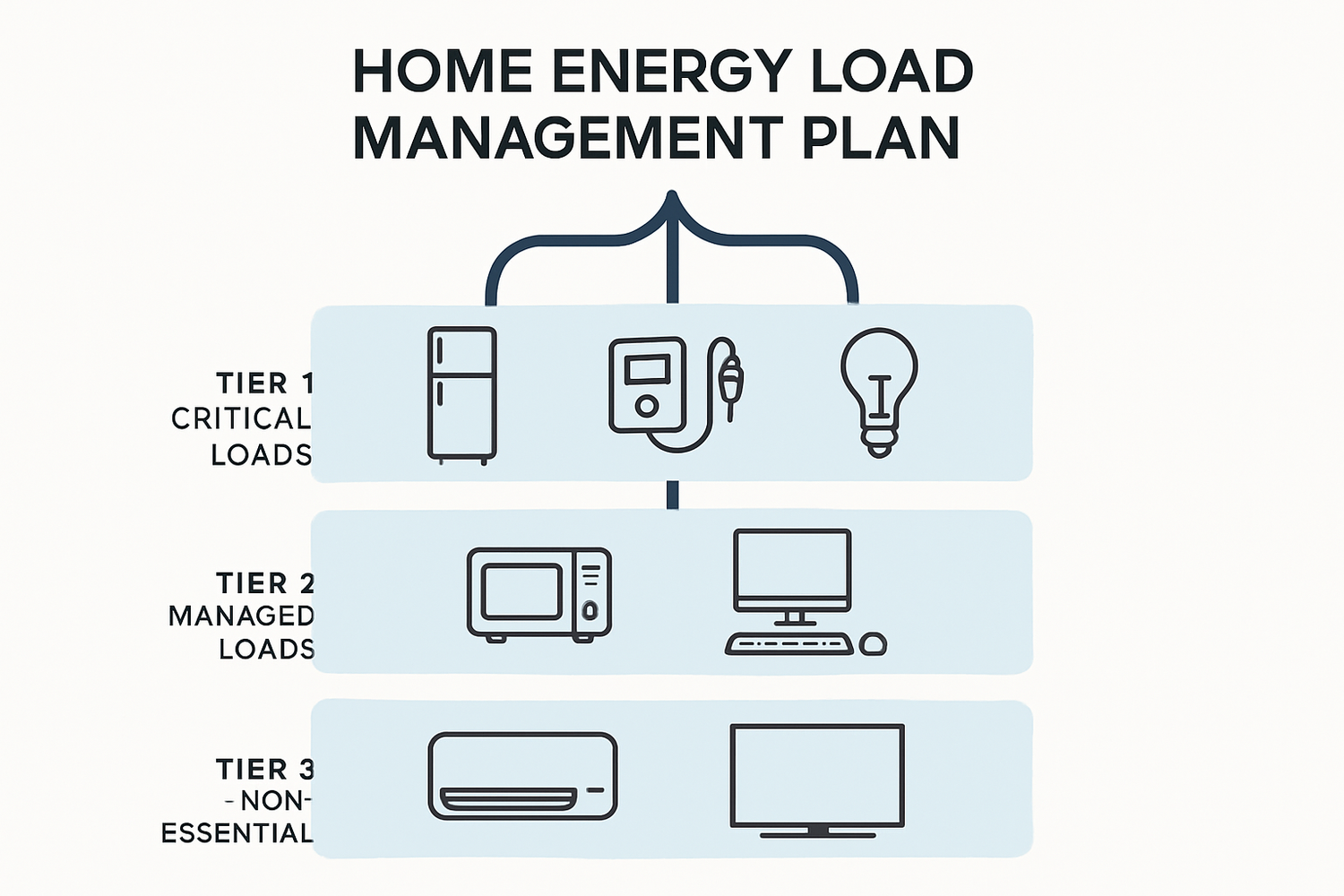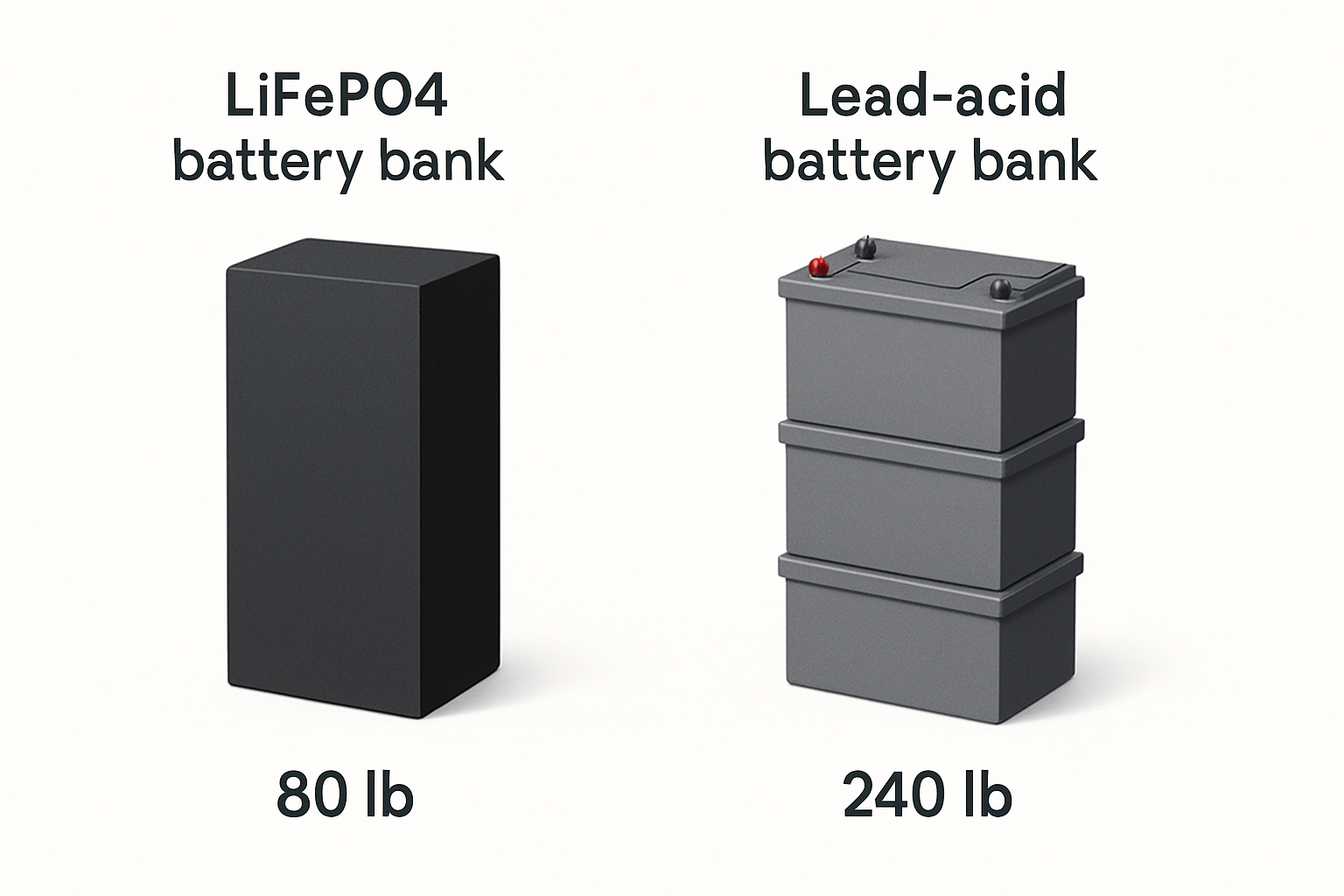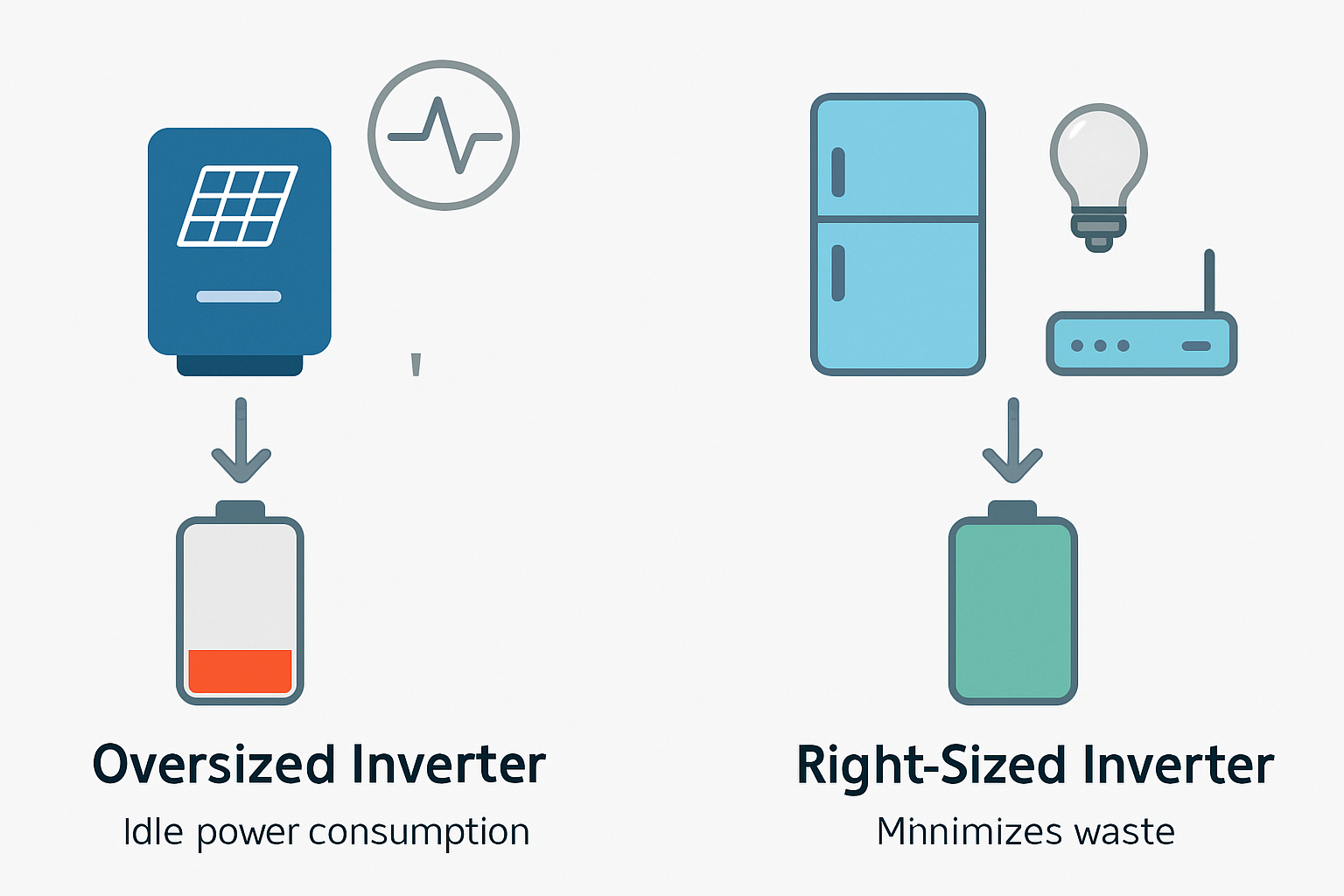During a power outage, your energy storage system becomes a lifeline. The key question is, how long will it last? The answer often depends less on the size of your battery and more on how you manage your electricity consumption. Effective load management is the strategic process of controlling which devices use power and when. This approach ensures your critical needs are met for the longest possible time, transforming your backup system from a temporary fix into a reliable power source.
Understanding Your Power Consumption
Before you can manage your energy, you must first measure it. A clear picture of your household's electricity usage is the foundation of any successful load management plan. This involves identifying every appliance and understanding its power demands.
Conducting a Household Energy Audit
An energy audit for backup purposes is a detailed inventory of your electrical loads. Start by listing all the devices you would want to power during an outage. For each item, find its power consumption in watts (W). This information is usually on a label on the device or in its manual. Note two figures if available: running wattage (the continuous power it uses) and starting wattage (the initial surge of power required by motors, like in refrigerators or pumps). This initial surge can be several times the running wattage and is a critical factor for your inverter's capacity.
Categorizing Critical and Non-Essential Loads
Not all loads are created equal. Separating them into categories helps you make smart decisions when power is limited.
- Critical Loads: These are essential for safety, health, and basic comfort. This category includes refrigerators, medical equipment (like a CPAP machine), a well pump for water, basic lighting, and communication devices like your modem and router.
- Non-Essential Loads: These are appliances you can live without during an outage. This group includes air conditioning, electric ovens, clothes dryers, dishwashers, and entertainment systems.
This simple act of categorization provides a clear framework for your backup blueprint.
A Blueprint for Strategic Load Management
With a clear understanding of your energy needs, you can now build a strategy to control them. This blueprint is about making conscious choices to extend your power reserves and maintain comfort and safety.
Prioritizing Your Power Tiers
Create a tiered system for your appliances. Tier 1 includes your critical loads that must always have power. Tier 2 consists of important but not vital devices, such as a microwave or a computer, which you might use sparingly. Tier 3 is for your non-essential loads, which should be turned off immediately when the grid fails. During an extended outage, you can decide to power down Tier 2 devices to conserve even more energy for the absolute essentials in Tier 1.
The Power of Scheduling and Shifting
Load shifting involves running high-power appliances at different times to avoid a large, simultaneous drain on your battery. For instance, instead of running the microwave while the well pump is active, you can wait for one to finish before starting the other. This keeps the instantaneous load on your inverter low and improves system efficiency. The principle of actively managing power demands is so effective that, as noted by the International Energy Agency, even large data centers use workload shifting across different times and locations to align with grid conditions and optimize energy use. You can apply the same logic in your home to maximize your stored energy.
Calculating and Extending Your Backup Duration
Once you have a plan, you can more accurately estimate how long your battery will last. This calculation empowers you to make informed decisions during an outage.
A Practical Formula for Backup Estimation
You can estimate your backup duration with a straightforward formula. First, determine the total wattage of the critical loads you plan to run simultaneously. Then, use this calculation:
- Backup Time (in hours) = (Total Battery Capacity in kWh × 0.9) / Average Load in kW
We use 0.9 to account for a 90% Depth of Discharge (DoD), a common practice for LiFePO4 batteries that preserves their health. For example, if you have a 10 kWh battery and your critical load is 0.5 kW (500 watts), your estimated backup time is (10 × 0.9) / 0.5 = 18 hours. For a detailed analysis of battery metrics, our guide on solar storage performance provides additional insights into how DoD and other factors influence real-world results.
Techniques to Maximize Every Watt
Beyond strategic load management, you can take other steps to stretch your power reserves.
- Upgrade to Efficiency: Replace old appliances with modern, energy-efficient models. LED lighting, for example, uses up to 75% less energy than incandescent bulbs.
- Eliminate Phantom Loads: Many electronics draw power even when turned off. This standby power, or 'phantom load', can add up. Unplugging devices or using smart power strips can eliminate this waste.
- Monitor and Adjust: Use your energy storage system's monitoring app to see your real-time consumption. If you see a spike, you can quickly identify the cause and adjust accordingly.
| Appliance Category | Typical Power Consumption (Watts) | Management Strategy |
|---|---|---|
| Refrigerator | 150 - 200 W (running) | Critical (Tier 1): Keep running, but avoid opening the door frequently. |
| LED Lights (per room) | 10 - 40 W | Critical (Tier 1): Use only in occupied rooms. |
| Internet Modem/Router | 10 - 20 W | Critical (Tier 1): Essential for communication and information. |
| Microwave | 800 - 1500 W | Managed (Tier 2): Use for short periods, avoid simultaneous use with other large loads. |
| Central Air Conditioning | 3000 - 5000 W | Non-Essential (Tier 3): Turn off immediately during an outage. |
| Television | 60 - 150 W | Non-Essential (Tier 3): Use only if power reserves are high. |
Achieving True Energy Resilience
Your energy storage system is a powerful tool for energy independence. By pairing high-quality technology like LiFePO4 batteries with a smart load management plan, you create a truly resilient power solution. It is not about going without; it is about allocating your stored energy intelligently. Auditing your needs, prioritizing your loads, and actively managing consumption gives you control over your power, ensuring peace of mind when you need it most.
Frequently Asked Questions
What is the biggest mistake people make with their backup power?
The most common error is failing to create a load management plan. Many people assume their battery will automatically power everything, only to find it depleted quickly by non-essential appliances like air conditioning or electric heaters. Understanding and prioritizing your loads beforehand is the key to maximizing backup duration.
Can I add more batteries later to increase my backup time?
Many modern energy storage systems, particularly those using modular LiFePO4 batteries, are designed for scalability. You can often add more battery capacity to your system as your needs change. It is important to ensure your inverter and other system components can handle the additional capacity.
How much does a high starting wattage on an appliance affect my battery?
A high starting (or surge) wattage places a significant, short-term demand on your inverter. Your inverter must be sized to handle the peak load of all devices starting up. While this surge only lasts a few seconds, frequent starting of large motors can drain a battery faster than a steady load. A good load management plan avoids starting multiple high-surge appliances at the same time.





Leave a comment
All comments are moderated before being published.
This site is protected by hCaptcha and the hCaptcha Privacy Policy and Terms of Service apply.